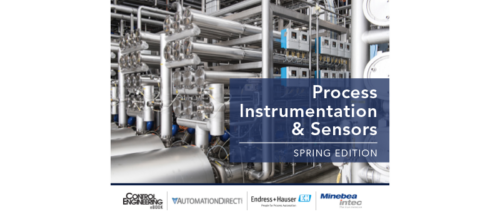5 basic questions for selecting a level instrument
Selecting the right level measurement instrument for your application can be difficult, but these questions are what you should be asking when evaluating your options.
Although level measurement instruments can be categorized by just two main categories—continuous and point level—selecting the right instrument can be complicated. Evaluating the many different sensing technologies and the accuracy of each for a specific application can be arduous.
Below are the five basic questions to help you narrow your selection of level instruments.
1. Is a continuous or point (discrete) measurement required?
This decision is dictated by the process control scheme. If a specific level such as a high or low for an alarm condition is needed, then a discrete device will suffice. Point measurement will only indicate whether the level is above or below a specific point. If a more definitive measurement is needed, then continuous measurement is warranted.
2. Is the measured substance a well-behaved liquid, a liquid that coats, a very viscous liquid, or a solid?
Most liquids settle and are therefore easier to measure. Other liquids and solids can coat or clog sensors resulting in false readings, therefore a non-contact or capacitance type sensor may be needed.
3. Is the measured substance electrically conductive?
Dielectric properties of the measured substance can affect capacitive sensors; therefore an alternate technology should be explored.
4. If in a tank/vessel application, does the measured substance create turbulence, foam, vapor, or dust?
Ultrasonic and reflective sensors can produce false readings in the aforementioned environment, therefore other technologies should be considered.
5. Is the instrument rated for the application and the environment?
Once the viable instruments and technologies have been pared down, verify the instrument of choice will yield the desired accuracy, and is rated for the environment in which it will be exposed. Insure the process (i.e. wetted) portions of the instrument are rated appropriately for the temperature range, pressure range, measurement range, and that materials of construction are compatible. Also verify the non-process portion of the instrument is rated appropriately for the ambient temperature range, bears the applicable NEMA rating, and if applicable is rated for hazardous (classified) areas.
This post was written by Andy Crossman. Andy is a Senior Control System Specialist at MAVERICK Technologies, a leading automation solutions provider offering industrial automation, strategic manufacturing, and enterprise integration services for the process industries. MAVERICK delivers expertise and consulting in a wide variety of areas including industrial automation controls, distributed control systems, manufacturing execution systems, operational strategy, business process optimization and more.
Do you have experience and expertise with the topics mentioned in this content? You should consider contributing to our CFE Media editorial team and getting the recognition you and your company deserve. Click here to start this process.


